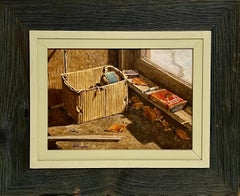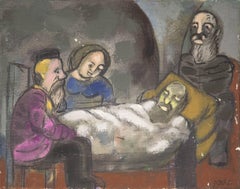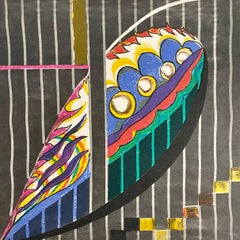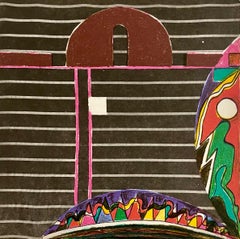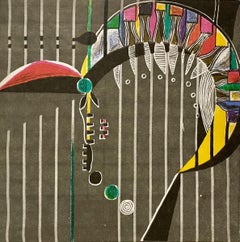Lions Gallery
1970s American Realist Figurative Paintings
Gesso, Oil, Board
1970s Modern Figurative Paintings
Canvas, Oil
1970s Surrealist Abstract Prints
Lithograph
1970s Surrealist Abstract Prints
Lithograph
1970s Surrealist Abstract Prints
Lithograph
1970s Surrealist Abstract Prints
Lithograph
1970s Street Art Color Photography
Screen
1970s Pop Art Abstract Prints
Lithograph, Screen
1970s Abstract Expressionist Abstract Paintings
Acrylic
1970s Abstract Abstract Sculptures
Stainless Steel
1970s Still-life Paintings
Canvas, Oil
1970s Modern Abstract Prints
Lithograph
1970s Modern Figurative Sculptures
Mixed Media
1970s Contemporary Figurative Sculptures
Mixed Media
1970s Expressionist Figurative Drawings and Watercolors
Watercolor
1970s Post-Modern Figurative Prints
Lithograph
1970s Pop Art Abstract Prints
Lithograph
1970s American Realist Black and White Photography
Silver Gelatin
1970s Abstract Abstract Paintings
Mixed Media, Handmade Paper
1970s American Modern Color Photography
Photographic Paper, C Print
1970s American Modern Color Photography
Photographic Paper, C Print
1970s American Modern Color Photography
Photographic Paper, C Print
1970s American Modern Color Photography
Photographic Paper, C Print
1970s American Modern Color Photography
Photographic Paper, C Print
1970s American Modern Color Photography
Photographic Paper, C Print
1970s American Modern Color Photography
Photographic Paper, C Print
1970s American Modern Color Photography
Photographic Paper, C Print
1970s American Modern Color Photography
Photographic Paper, C Print
1970s American Modern Color Photography
Photographic Paper, C Print
1970s American Modern Color Photography
Photographic Paper, C Print
1970s American Modern Color Photography
Photographic Paper, C Print
1970s Minimalist Abstract Paintings
Metal
1970s American Modern Figurative Sculptures
Bronze
1970s Op Art Abstract Prints
Lithograph
1970s Op Art Abstract Prints
Lithograph
1970s Op Art Abstract Prints
Lithograph
1970s American Modern Figurative Sculptures
Bronze
1970s Realist Black and White Photography
Silver Gelatin
1970s Realist Black and White Photography
Silver Gelatin
1970s Realist Black and White Photography
Silver Gelatin
1970s Contemporary Abstract Paintings
Spray Paint, Stencil
1970s Neo-Expressionist Figurative Paintings
Canvas, Oil
1970s Pop Art Figurative Drawings and Watercolors
Carbon Pencil, Paper
1970s Pop Art Figurative Drawings and Watercolors
Paper, Carbon Pencil
1970s Pop Art Figurative Drawings and Watercolors
Watercolor
1970s Modern Figurative Sculptures
Silver, Bronze
1970s Realist Landscape Drawings and Watercolors
Watercolor
1970s Naturalistic Figurative Photography
Silver Gelatin
1970s Surrealist Animal Prints
Color, Drypoint, Etching
1970s Op Art Abstract Paintings
Metal, Enamel
1970s Cubist Landscape Paintings
Canvas, Oil
1970s Neo-Expressionist Abstract Paintings
Oil, Canvas
1970s Modern Animal Prints
Etching
1970s Street Art Portrait Photography
Photographic Paper, Silver Gelatin
1970s Mixed Media
Mixed Media
1970s Abstract Expressionist Sculptures
Mixed Media
1970s Surrealist Paintings
Lithograph
1970s Black and White Photography
Silver Gelatin
1970s Black and White Photography
Silver Gelatin
1970s Black and White Photography
Silver Gelatin
